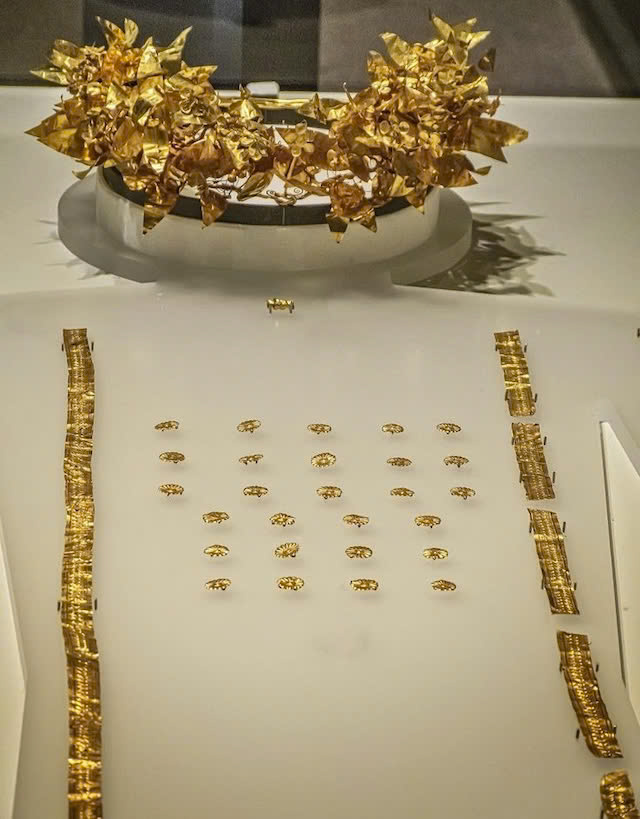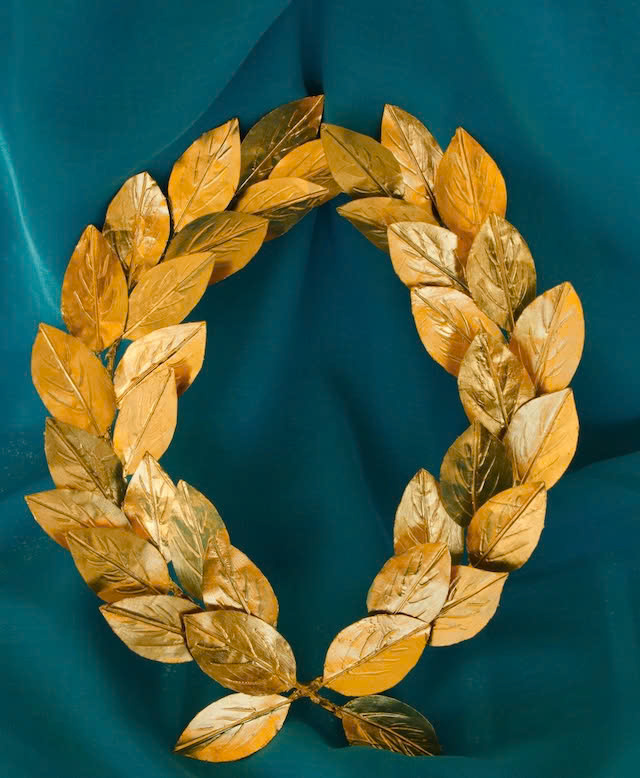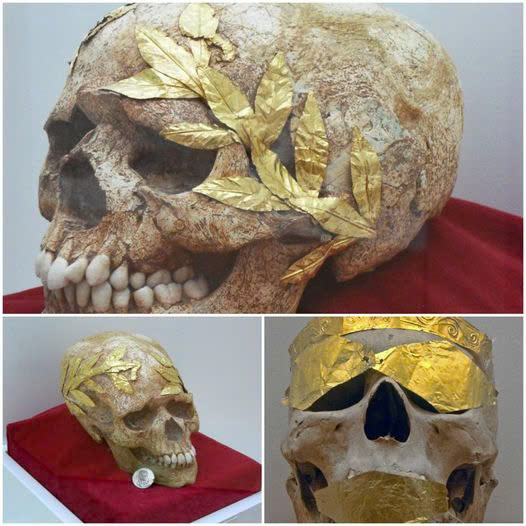In a remarkable archaeological discovery that bridges millennia, researchers unearthed a fascinating artifact in the ancient city of Lato, Crete – a human skull still wearing its golden wreath after 2,500 years. This extraordinary find not only showcases the wealth and artistry of ancient Greek society but also provides invaluable insights into their burial customs and beliefs.
The Remarkable Discovery

In the cemetery of Lato, archaeologists made a breathtaking find: a skull adorned with an intricate golden wreath fashioned in the form of laurel branches. Alongside this stunning piece, they discovered a silver coin placed within the skull’s mouth – a traditional offering to Charon, the mythological ferryman of Hades, meant to secure safe passage to the afterlife.
The Ancient City of Lato
A Strategic Stronghold
Lato was a prominent Dorian city-state in eastern Crete, strategically positioned overlooking the Mirabello Bay. While its origins predate the Dorian arrival, most of the visible ruins today date back to the 5th and 4th centuries BCE. The city’s elevated location between two peaks made it an important center for both military defense and religious activities.
Religious and Cultural Significance
Named possibly after the goddess Leto, mother of Apollo and Artemis, Lato held significant religious importance in ancient Greek culture. The city even minted its own coins featuring the goddess Eileithyia, further cementing its religious and cultural significance in the region.
Symbols of Honor and Afterlife
The Golden Wreath

The golden wreath found with the skull represents more than mere decoration. In ancient Greek culture, such wreaths, typically made from laurel, olive, or myrtle branches, were prestigious symbols awarded to athletes, military leaders, and other distinguished individuals. The presence of this laurel wreath suggests the deceased may have been an accomplished athlete.
The Ferryman’s Fee

The silver coin discovered in the skull’s mouth reflects the deep-rooted Greek belief in the afterlife. According to mythology, souls needed to pay Charon to cross the River Styx into the realm of the dead. This burial practice ensures the deceased’s spiritual journey continues beyond death.
Preserving Ancient Legacy
Originally housed in the Archaeological Museum of Agios Nikolaos, this remarkable find joined other significant artifacts from eastern Crete’s rich history. Although the museum is temporarily closed, the golden-crowned skull remains a powerful testament to the sophistication of ancient Greek civilization and their profound respect for both life and death.

This extraordinary discovery continues to captivate archaeologists and history enthusiasts alike, offering a tangible connection to our ancient past and reminding us of the importance of preserving these invaluable historical treasures for future generations to study and admire.

